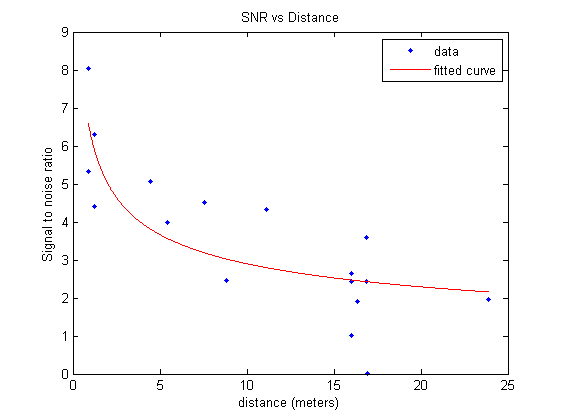| Version 85 (modified by , 10 years ago) ( diff ) |
|---|
Indoor Localization
Table of Contents
- 2015 Winlab Summer Internship
- LTE Unlicensed (LTE-U)
- Introduction
- Objectives
- Theory
- Analyzing Tools
- Experiment 1: Transmit and Receive LTE Signal
- Experiment 2: The Waterfall Plot
- Experiment 3: eNB and UE GUI
- Experiment 4: Varying Bandwidths
- Experiment 5: Working with TDD or FDD
- Experiment 6: TDD with Varying Bandwidths
- Experiment 7: TDD Waterfall Plot
- Poster
- Members
- Materials
- Resources
- LTE Unlicensed (LTE-U)
- Body Sensor Networks
- Dynamic Video Encoding
Introduction
The use of GPS services is growing just as fast as the development and accessibility of mobile devices. A GPS device, which used to be a significant investment, is now included in every smartphone that emerges on the market. These services have assisted many as they navigate themselves from place to place outdoors.
Although GPS is well-defined outdoors, localization indoors is still an active research problem. GPS signals indoors tend to be weaker; even if they are usable, the accuracy associated with GPS signals is not up to par. Large errors (on the order of meters) associated with GPS generally do not affect the user's ability to navigate to buildings, parks, landmarks, etc. Errors on the order of meters indoors, however, could mean that somebody is in a different room or different building altogether. A fine-grained service, down to the centimeter, is needed to localize indoors.
Motivation
An effective, low-cost, easy-to-implement solution to the indoor localization problem will have immediate impacts on everyday life, especially commercial retail. Based on movements of people in a store, retailers could determine where to place their best-selling items. They could place products effectively to accommodate shoppers and increase profits. In addition to commercial applications, indoor localization could help emergency responders efficiently respond to calls indoors, or help the elderly navigate inside a large building. Once the technology is fully developed, there are plenty of applications.
What is ORBIT Lab?
The ORBIT facility consists of a 20 x 20 grid of programmable radio nodes used to test wireless protocols and applications. Certain nodes in the facility, as well as certain sandboxes (part of the lab but not the grid), contain Universal Software Radio Peripherals (USRP), which are software defined radios that transmit and receive signals.

|
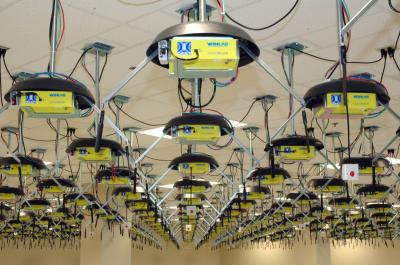
|
Founded in 2003 and launched in 2005, this lab provides the world's largest academic testbed for wireless communications. As of 2014, there are over 1000 registered users who have logged ~200,000 experimentation hours since the lab's founding.
Overall Approach
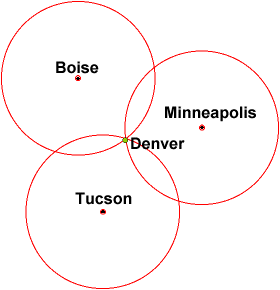
|
Trilateration is the method of determining location of an object through relative distances of points and geometry of spheres. It is a method that is used in Global Positioning Systems but we intend to use the same principle in indoor localization.
As illustrated below, knowing an object's relative distance from Boise, Minneapolis and Tucson, one can derive that that object is in Denver. Similarly, knowing a person's location from three USRPs enables us to roughly estimate his position in an indoor place.
||
|
|
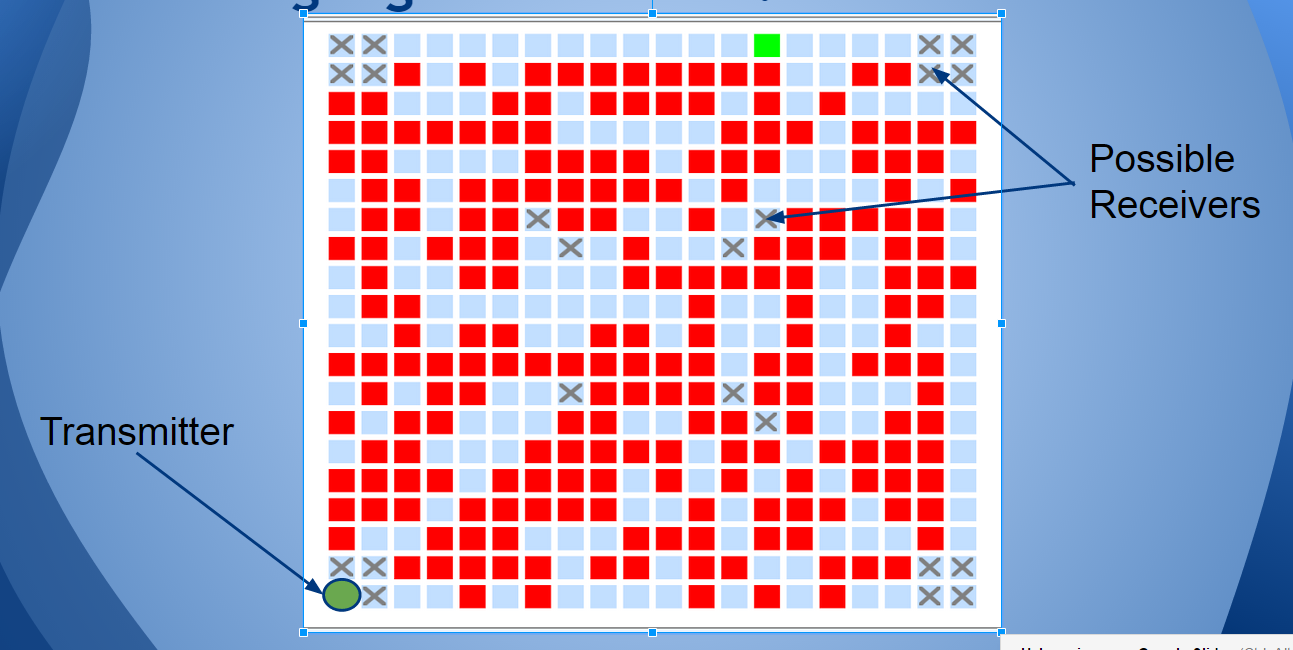
|
|
|
The photos below show what occurs before the signal is transmitted and after the signal is transmitted. The ASCII art below gives us a general idea of the signal amplitude, which is then measure directly with OMF (ORBIT Management Framework) commands.

|
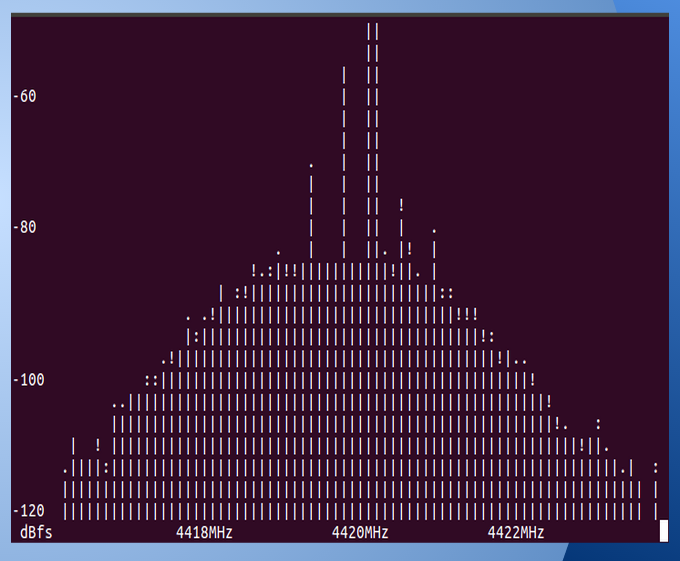
|
|
|
|
|
|
| Analysis: The left image shows signal reception when there is no signal transmitted. This is the noise that is present while we conduct experiments in the ORBIT room. The peak that is visible in the right image is the frequency that the transmitted signal is received at the receiver nodes. |
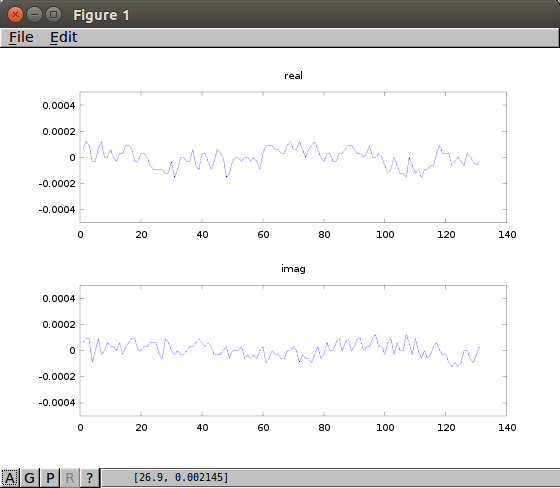
|
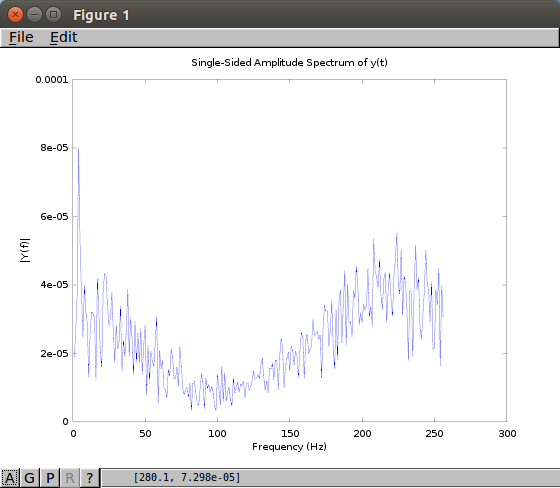
|
|
|
|
|
|
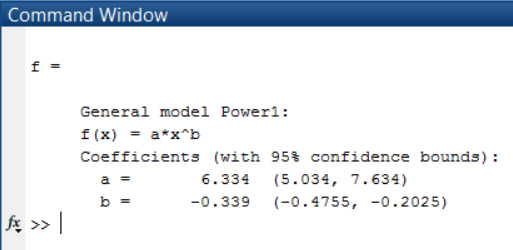
|
||
|
Analysis: As shown in this experiment, the line of best fit follows a generally negative and exponential curve but some of the points are no where close to the curve. The scattering of the data points signify either an error in signal processing or simply not enough data points. We believed the latter might have had a hand in this error. |

|

|
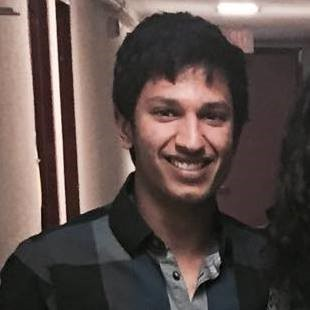
|
| Rahul Hingorani University of Michigan Industrial/Electrical Engineering |
Vineet Shenoy Rutgers University Electrical and Computer Engineering |
Karan Rajput Rutgers University Electrical and Computer Engineering |
Attachments (30)
- Rahul.png (16.1 KB ) - added by 11 years ago.
- Vineet.png (85.9 KB ) - added by 11 years ago.
- Karan.png (193.7 KB ) - added by 10 years ago.
- Localization Week 2.pdf (218.2 KB ) - added by 10 years ago.
- Localization Week 3.pdf (2.7 MB ) - added by 10 years ago.
- Week 4 Localization.pdf (1.8 MB ) - added by 10 years ago.
-
Orbit lab.jpg
(27.8 KB
) - added by 10 years ago.
Orbit lab photo
-
orbit_banner.png
(6.0 KB
) - added by 10 years ago.
Orbit banner
-
gridLocations.png
(326.8 KB
) - added by 10 years ago.
Grid Location of Transmitter and Receiver
-
Noise.png
(94.9 KB
) - added by 10 years ago.
Orbit Noise
-
Signal.png
(99.6 KB
) - added by 10 years ago.
Orbit Signal
- SNR vs Dist.png (4.6 KB ) - added by 10 years ago.
- SNR fit.png (23.2 KB ) - added by 10 years ago.
- triangulation.jpg (429.6 KB ) - added by 10 years ago.
- trilateration.gif (4.7 KB ) - added by 10 years ago.
- i-q1.png (26.5 KB ) - added by 10 years ago.
- i-q2.png (21.9 KB ) - added by 10 years ago.
- i-q3.png (29.3 KB ) - added by 10 years ago.
- amp.png (275.6 KB ) - added by 10 years ago.
- power.png (53.6 KB ) - added by 10 years ago.
- povdis.png (121.7 KB ) - added by 10 years ago.
- updatedgraph.png (72.4 KB ) - added by 10 years ago.
- newboard.png (248.3 KB ) - added by 10 years ago.
- latestapp.png (252.6 KB ) - added by 10 years ago.
- sandbox.png (936.9 KB ) - added by 10 years ago.
- trans.png (30.7 KB ) - added by 10 years ago.
- compare.png (29.2 KB ) - added by 10 years ago.
- oneghz.png (13.5 KB ) - added by 10 years ago.
- theovsreal.png (29.5 KB ) - added by 10 years ago.
- plan.png (454.8 KB ) - added by 10 years ago.

